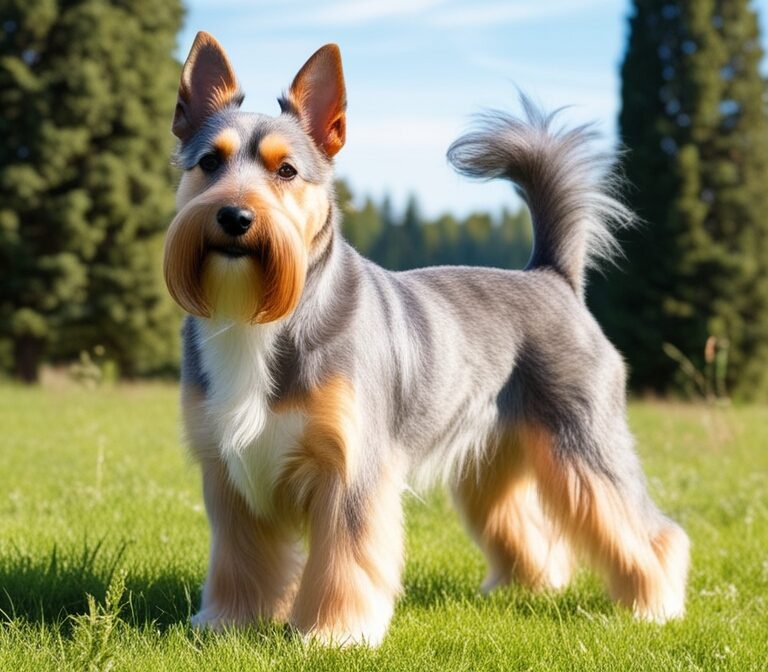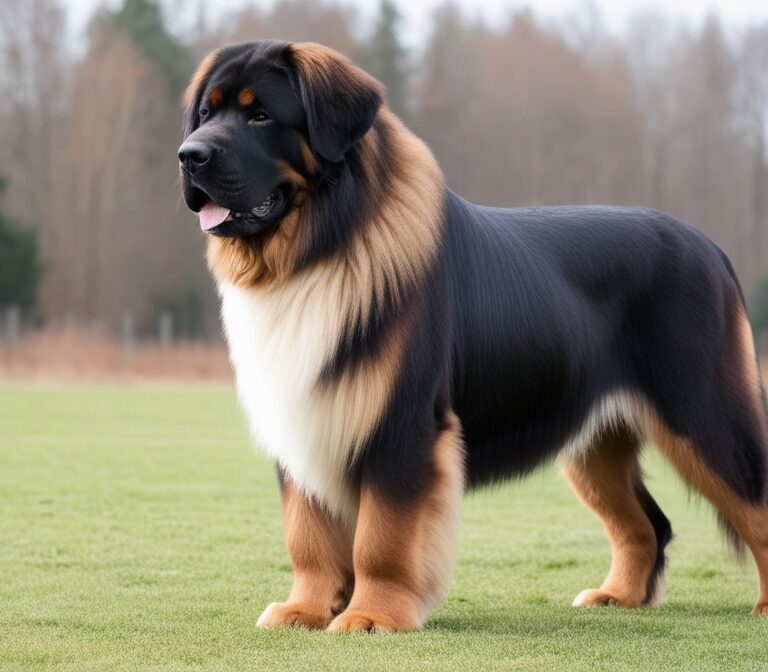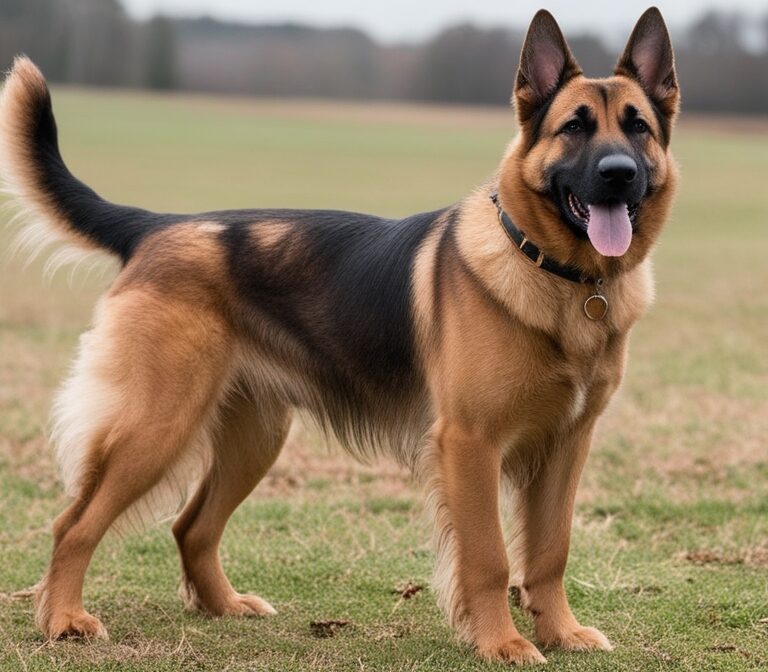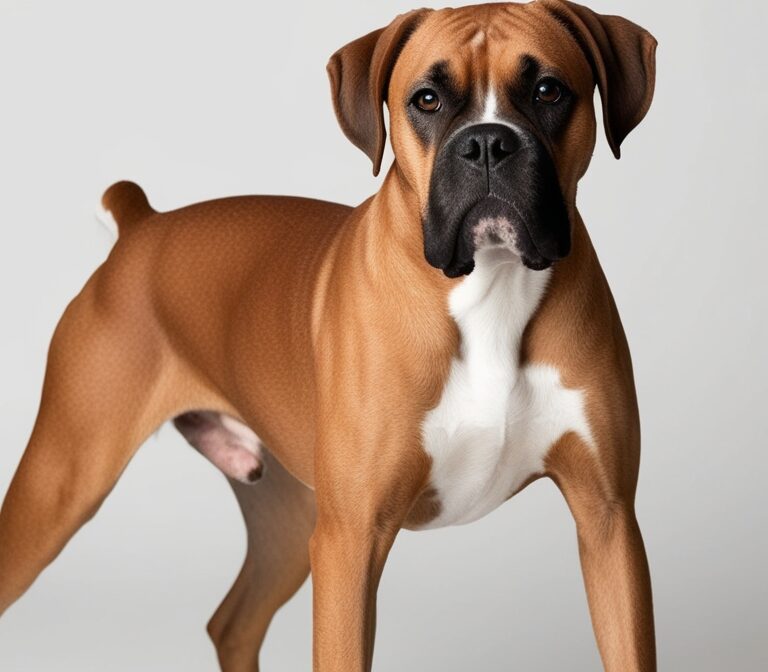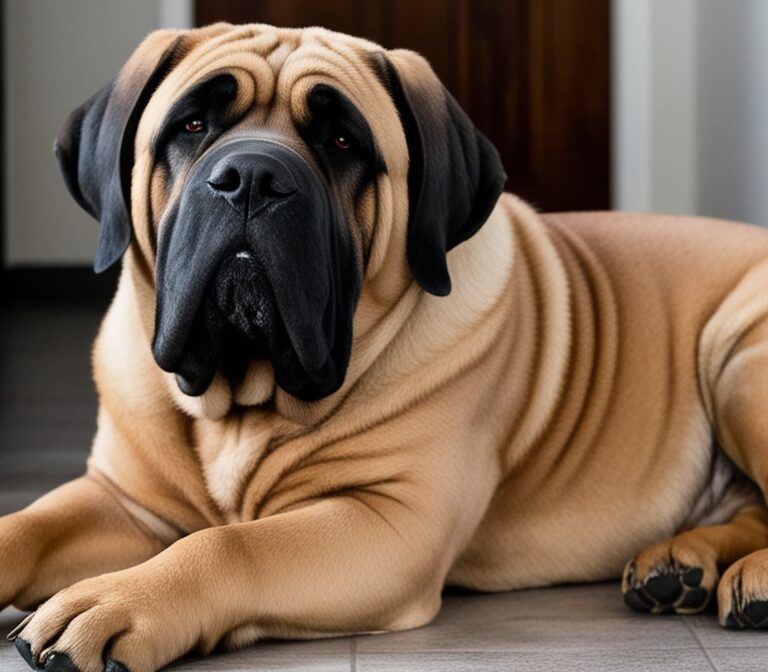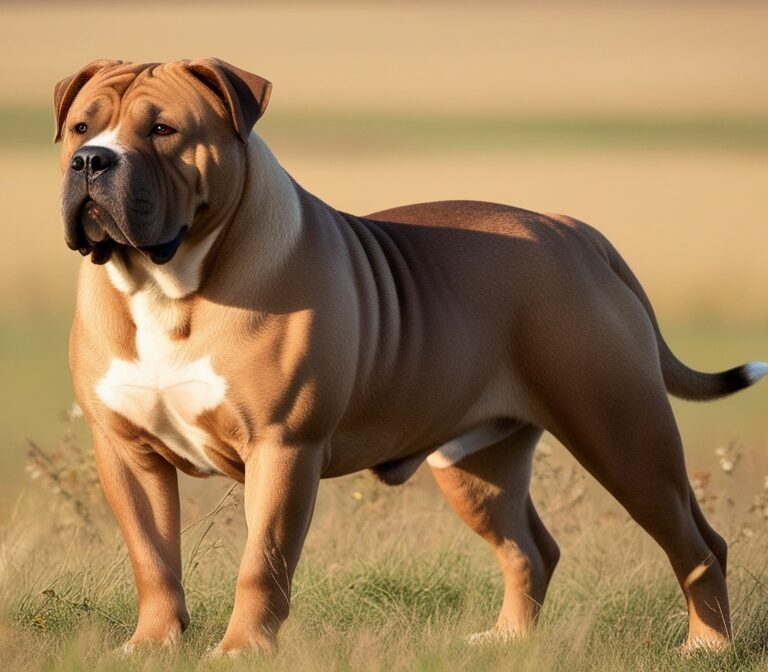Dutch Shepherd Dog: Complete Guide to History, Characteristics, Training, Health, and Care

Overview of the Dutch Shepherd Dog
The Dutch Shepherd Dog is one of Europe’s most versatile working breeds, admired for its intelligence, loyalty, and natural athleticism. Originating in the Netherlands, this breed was once the indispensable partner of Dutch farmers, herding flocks, guarding property, and performing countless other rural tasks. Though less globally famous than breeds like the German Shepherd or Belgian Malinois, the Dutch Shepherd has earned a growing reputation as a dependable working dog, excelling in police service, military operations, and competitive canine sports. With a keen mind, strong work ethic, and balanced temperament, the Dutch Shepherd Dog is equally comfortable as a protector, worker, or family companion.
Their distinctive brindle coat, medium build, and upright posture give the Dutch Shepherd a striking appearance, but it is their adaptable personality that makes them stand out. They are highly trainable, eager to please, and capable of learning complex tasks quickly. While they thrive in working environments, they also develop deep bonds with their families, making them both formidable guardians and affectionate household members.
History and Origins of the Dutch Shepherd
The history of the Dutch Shepherd begins in the Netherlands during the 19th century. Dutch farmers needed a reliable and adaptable dog that could handle multiple responsibilities. The harsh landscapes of the Netherlands, combined with the demands of agricultural life, required a dog that could manage sheep, protect property, guard livestock, and even pull small carts when necessary. The Dutch Shepherd was developed specifically for this multi-purpose role, and its natural intelligence and versatility made it invaluable to farming families.
At that time, Dutch Shepherds closely resembled the Belgian Shepherd and the German Shepherd, as all three breeds share common ancestry. However, while the German Shepherd was bred for specialization and refinement and the Belgian Shepherd developed distinct coat varieties, the Dutch Shepherd retained its rustic, all-purpose character. The most distinguishing trait that set it apart was its brindle coat, introduced to discourage crossbreeding with German Shepherds and Belgian Shepherds.
Unfortunately, the advent of modern farming in the late 19th and 20th centuries reduced the need for herding dogs. Dutch Shepherd numbers declined drastically, and by World War II, the breed was nearly extinct. The war brought famine and hardship, making breeding programs impossible. After the war, enthusiasts revived the breed, but Dutch Shepherds remained relatively rare compared to other shepherd breeds.
Today, though still considered uncommon, the Dutch Shepherd has seen a resurgence. Thanks to its exceptional working capabilities, it is now widely used in police work, military service, and dog sports. Its reputation as a loyal and versatile companion has also contributed to its rising popularity as a household pet for active families.
Physical Characteristics of the Dutch Shepherd
The Dutch Shepherd Dog is a medium-sized, well-balanced dog with an athletic yet elegant frame. Its build reflects its working heritage, combining strength, agility, and endurance.
Males typically stand between 22 and 25 inches at the shoulder, while females range from 21 to 24 inches. The weight generally falls between 45 and 75 pounds, depending on the dog’s sex and build. Despite their muscular physique, Dutch Shepherds are never bulky; they are lean, agile, and capable of great bursts of speed.
One of the most distinctive features of the breed is its coat. Dutch Shepherds come in three coat types: short, long, and rough. The short-haired variety has a dense, fine coat that requires minimal grooming, while the long-haired version has a straight, harsh coat with a dense undercoat. The rough-haired type, though less common, has a tousled, wiry coat that gives it a rugged appearance. All coat varieties are double-coated, providing protection against harsh weather.
Coloring is another hallmark of the breed. Dutch Shepherds are almost always brindle, with shades of gold, silver, or gray forming tiger-like striping across the coat. This brindling was deliberately encouraged to distinguish the breed from its German and Belgian cousins. White markings are generally minimal, limited to the chest or toes.
The head of the Dutch Shepherd is wedge-shaped, with a straight muzzle and strong jaw. The ears are erect and triangular, always alert, and the almond-shaped eyes express intelligence and attentiveness. Their tails are long and slightly curved, carried naturally when the dog is at rest. Overall, the Dutch Shepherd gives an impression of confidence, energy, and readiness for action.
Temperament and Personality
Dutch Shepherds are best described as loyal, intelligent, and highly trainable. They are dogs with a strong sense of duty, always eager to work and please their handlers. This temperament makes them excellent working dogs, but also means they require engaged, responsible owners who can provide both mental and physical stimulation.
One of the most appealing traits of the Dutch Shepherd is its adaptability. Historically, they were used for a wide range of tasks, and this versatility has carried into modern times. They excel equally in herding, guarding, tracking, obedience, agility, and protection work. This flexibility stems from their high intelligence and problem-solving ability, which allows them to quickly adjust to new roles.
With families, Dutch Shepherds are affectionate and protective without being overly aggressive. They form strong bonds with their owners and are naturally watchful, making them excellent watchdogs. They are usually good with children, especially when raised with them, though their herding instincts may sometimes cause them to nip or attempt to “herd” kids during play. Early training and socialization can help curb such behaviors.
Strangers are often met with cautious suspicion, but not unwarranted aggression. Dutch Shepherds are reserved with people they do not know, but they warm up once they recognize no threat is present. With other dogs, they can be social if properly introduced, though their strong personalities may lead to dominance issues with equally confident breeds.
Above all, Dutch Shepherds thrive on activity and purpose. A bored Dutch Shepherd may become destructive or unruly, but a mentally stimulated and well-exercised Dutch Shepherd is a model companion.
Preservation of the Breed
The Dutch Shepherd came dangerously close to extinction in the mid-20th century. During World War II, breeding almost stopped completely, and many dogs perished due to food shortages or were requisitioned for military use. After the war, Dutch breeders made a concentrated effort to revive the population. However, the breed’s gene pool remained limited, and this challenge continues today.
Breed clubs, particularly in the Netherlands, have worked diligently to protect the Dutch Shepherd from overbreeding and to preserve its working abilities. The Dutch Kennel Club, along with international organizations, enforces strict breeding guidelines that discourage excessive inbreeding and prioritize health and temperament over appearance. While the brindle coat pattern is a defining feature, breeders emphasize functionality and utility, ensuring the Dutch Shepherd remains a capable working dog rather than just a showpiece.
International demand for the breed has grown, especially in the United States and parts of Europe. Ethical breeding programs abroad now collaborate with Dutch clubs to maintain genetic diversity and breed standards. Preservation efforts highlight the importance of maintaining the Dutch Shepherd’s identity as a versatile, intelligent, and resilient working dog.
Travel and Lifestyle Compatibility
The Dutch Shepherd adapts well to active lifestyles and is an ideal companion for people who enjoy outdoor adventures. They make excellent partners for hikers, runners, cyclists, and even swimmers, as many enjoy water activities. Because of their intelligence, they also thrive when traveling with owners who incorporate training or activities into daily routines.
However, they may not be the best fit for frequent flyers or individuals with inconsistent schedules. The Dutch Shepherd craves routine, structure, and companionship. Long hours of solitude can lead to separation anxiety, which manifests in destructive behavior. Boarding or leaving them with sitters unfamiliar with the breed can also be difficult, as they bond deeply with their owners.
The Future of the Dutch Shepherd
Looking ahead, the Dutch Shepherd faces both opportunities and challenges. On one hand, the breed’s popularity is rising among law enforcement agencies and dog sport enthusiasts, which helps preserve its working capabilities. On the other hand, increasing demand risks irresponsible breeding, which could lead to health and temperament issues similar to those seen in overbred German Shepherds.
Breed clubs and responsible breeders continue to emphasize the importance of preserving the Dutch Shepherd’s original traits: intelligence, versatility, and physical soundness. If these values are maintained, the breed’s future is bright.
Technological advancements in canine genetics may also support the preservation of this rare breed. Genetic testing and responsible breeding practices can ensure a healthier population while retaining the dog’s strong working heritage. The global community of Dutch Shepherd enthusiasts plays a vital role in safeguarding the breed for generations to come.
Why Choose a Dutch Shepherd?
Choosing a Dutch Shepherd means committing to a partnership with one of the most intelligent and versatile dogs in the world. They are not a breed for everyone, but for the right owner, they offer unparalleled loyalty, companionship, and ability. Whether serving as a protector, worker, or cherished family pet, the Dutch Shepherd brings devotion and energy into every aspect of life.
Their adaptability to various roles — from herding livestock to supporting police operations or providing therapy — showcases their exceptional range of abilities. Owners who understand and embrace their needs will find in the Dutch Shepherd not only a capable working dog but also a lifelong friend.
Common Challenges for Owners
Owning a Dutch Shepherd is rewarding but not without its challenges. Their high energy levels mean they can be overwhelming for first-time dog owners. Without sufficient exercise, these dogs may channel their energy into destructive behaviors like chewing furniture, digging, or barking excessively. They are not suitable for apartment living unless the owner is exceptionally committed to providing daily outdoor activity.
Another challenge is their strong protective instinct. While this makes them excellent guardians, it can lead to overprotectiveness if not properly managed. Early training and socialization are critical to teaching the dog how to differentiate between normal social interactions and genuine threats.
Dutch Shepherds are also known for being independent thinkers. While this intelligence is an asset, it means they may test boundaries or look for loopholes in training. Consistency, patience, and creativity are required to keep them engaged. Owners who lack confidence or structure may struggle to handle this breed effectively.
Health and Lifespan
The Dutch Shepherd Dog is generally a healthy breed, benefiting from its relatively small gene pool and working-dog heritage. Unlike some breeds that have been heavily altered through selective breeding, Dutch Shepherds have retained much of their natural resilience.
The average lifespan of a Dutch Shepherd ranges between 11 and 14 years, with many living healthy lives well into their senior years. However, like all dogs, they are prone to certain health concerns.
Hip dysplasia is one of the most common conditions affecting the breed. This hereditary disorder can cause pain and mobility issues, particularly in older dogs. Reputable breeders screen their breeding stock to minimize the risk of passing on this condition. Elbow dysplasia, though less common, may also occur.
Progressive retinal atrophy (PRA) and other eye conditions have been documented in the breed, though they are relatively rare. Thyroid disorders and allergies may appear in some dogs, particularly food or environmental sensitivities. The rough-coated variety may be prone to certain skin issues due to its wiry hair.
Responsible ownership plays a key role in maintaining a Dutch Shepherd’s health. Regular veterinary checkups, a balanced diet, appropriate exercise, and preventative care all contribute to a long and happy life. Breeders who prioritize health testing and careful pairing are essential to preserving the vitality of the breed.
Grooming and Maintenance
Grooming needs for the Dutch Shepherd vary depending on coat type, but overall they are considered relatively low-maintenance compared to other shepherd breeds.
The short-coated Dutch Shepherd requires the least grooming. Weekly brushing is usually sufficient to remove dead hair and keep the coat shiny. During seasonal shedding periods, more frequent brushing will help manage loose undercoat.
The long-coated variety requires more attention, with regular brushing needed to prevent tangles and mats. A wide-toothed comb or slicker brush works well to maintain the coat. The undercoat sheds heavily in spring and fall, requiring extra grooming sessions during these times.
The rough-coated Dutch Shepherd has the most demanding grooming requirements. Its wiry coat needs hand-stripping a few times a year to remove dead hair and maintain texture. Without proper care, the coat can become unruly or uncomfortable for the dog.
Bathing should be occasional, as over-bathing can strip natural oils from the coat. Ears should be checked regularly for dirt or infection, nails should be trimmed as needed, and dental care is essential for overall health.
Despite their varied coat types, Dutch Shepherds are relatively clean dogs with minimal odor. Their grooming routine, while important, is far less intensive than that of many long-haired herding breeds.
Diet and Nutrition
The Dutch Shepherd is an active, high-energy dog, and its nutritional needs reflect its demanding lifestyle. Whether working on a farm, performing in police service, or simply living as a family pet, this breed requires a diet that supports muscle development, stamina, and overall health.
A high-quality diet based on lean proteins is essential. Chicken, turkey, beef, lamb, and fish are excellent protein sources that fuel the breed’s active metabolism. Protein should make up the bulk of their meals to maintain strong muscles and support recovery after vigorous exercise. Complex carbohydrates such as brown rice, oats, and sweet potatoes provide slow-release energy, keeping the dog fueled throughout the day. Healthy fats from fish oil or flaxseed oil are also important, as they support brain function, joint health, and coat condition.
Owners should avoid fillers like corn, soy, or excessive grains, as these can contribute to allergies or digestive issues in some Dutch Shepherds. Instead, balanced commercial kibble formulated for active or working dogs often provides the necessary blend of protein, fats, and micronutrients. For owners preferring fresh or raw diets, careful planning is required to ensure the dog receives complete and balanced nutrition.
Puppies, with their rapid growth and high activity levels, need diets rich in protein and fat. Overfeeding, however, must be avoided to reduce the risk of joint issues later in life. Adults require consistent feeding routines, typically two meals per day, while seniors may need adjusted diets lower in calories but supplemented with joint-supportive nutrients like glucosamine and chondroitin.
Fresh water must always be available, especially for Dutch Shepherds engaged in intense exercise. Because they are highly athletic, dehydration can affect their performance and well-being.
Exercise Requirements
The Dutch Shepherd is not a breed for sedentary households. With working-dog origins, it thrives on daily physical activity and mental stimulation. An adult Dutch Shepherd typically needs at least 90 minutes to two hours of vigorous exercise per day, which can include long walks, runs, hiking, and structured play sessions.
This breed excels at canine sports such as agility, obedience, flyball, herding trials, and protection work. These activities not only provide exercise but also satisfy their need for problem-solving and teamwork. Mental stimulation is just as important as physical exercise, and Dutch Shepherds thrive when given jobs to do, whether formal training exercises or simple household tasks like fetching items.
Without sufficient stimulation, Dutch Shepherds may develop destructive behaviors. They are too intelligent and energetic to be left idle, and boredom can lead to chewing, digging, or excessive barking. A secure yard, daily engagement, and structured routines are crucial.
Puppies and young dogs should not be over-exercised, as their joints and bones are still developing. Moderate play, training, and socialization are more appropriate during early stages, gradually building stamina as they mature.
Training and Socialization
Training is where the Dutch Shepherd truly shines. Highly intelligent and eager to please, they are among the most trainable of all shepherd breeds. Positive reinforcement methods work best, as this breed responds enthusiastically to praise, treats, and play rewards. Harsh or inconsistent training can damage trust and hinder progress.
From an early age, Dutch Shepherd puppies should be socialized with different environments, people, animals, and sounds. Proper socialization ensures they develop into confident, well-adjusted adults. Without it, they may become overly cautious or territorial.
Basic obedience training should start young, with commands like sit, stay, come, and heel forming the foundation. Once mastered, more advanced training can be introduced, as Dutch Shepherds enjoy learning complex tasks and challenges. Their intelligence allows them to excel in scent detection, tracking, and advanced obedience routines.
One of their greatest strengths is impulse control. With proper training, they can remain calm in highly distracting environments, making them reliable for police, military, or protection roles. However, their protective instincts mean they must be trained to distinguish between real threats and harmless situations.
Consistency is key. Dutch Shepherds respect strong leadership, but not dominance. They thrive under owners who set firm boundaries while maintaining a partnership-like relationship.
Working Roles of the Dutch Shepherd
The Dutch Shepherd is one of the most versatile working dogs in the world. Though its farming origins shaped its multipurpose abilities, its modern roles extend into numerous fields.
Police and Military Service
The Dutch Shepherd is increasingly used by police and military forces around the world. Their trainability, athleticism, and strong drive make them exceptional at detection, tracking, and apprehension. Unlike the more common German Shepherd and Belgian Malinois, Dutch Shepherds remain less widespread, giving them an edge in genetic diversity and fewer health problems related to overbreeding.
They are trained in narcotics detection, explosives detection, search and rescue, and patrol duties. Their ability to remain focused under pressure makes them invaluable in dangerous and high-stress operations.
Service and Therapy Work
Beyond law enforcement, Dutch Shepherds excel as service dogs. Their intelligence and sensitivity make them suitable for assisting people with disabilities, from guiding the visually impaired to supporting individuals with PTSD. They are also used in therapy roles, providing comfort and stability in hospitals, nursing homes, and rehabilitation centers.
Herding and Farm Work
Though less common today, the Dutch Shepherd retains its herding instinct. On farms, they can still drive sheep or cattle with precision. Their natural balance of assertiveness and control makes them effective without being overly aggressive toward livestock.
Sports and Competitions
Many Dutch Shepherd owners channel the breed’s drive into competitive sports. Agility, Schutzhund, obedience, and protection sports provide ideal outlets for their energy and intelligence. In these arenas, Dutch Shepherds consistently impress with their speed, accuracy, and ability to perform under pressure.
Suitability as a Family Dog
While the Dutch Shepherd is a working dog at heart, it can thrive in family environments provided its needs are met. Families who lead active lifestyles will find in the Dutch Shepherd a devoted and protective companion.
They are affectionate with their families, often forming particularly close bonds with one or two individuals. With children, they can be gentle and playful, though supervision is recommended with very young kids due to their natural herding instincts. Proper training reduces tendencies to nip or herd children during play.
With other pets, Dutch Shepherds usually do well if raised alongside them. Their prey drive is moderate, and while they may chase smaller animals outdoors, they generally coexist peacefully with household pets once boundaries are established.
The key factor in their suitability as family dogs is stimulation. Families who cannot provide daily exercise, engagement, and structured routines may struggle with the breed’s intensity. However, for active owners, the Dutch Shepherd’s loyalty, intelligence, and protective instincts make it an outstanding family member.
Popularity and Recognition
Despite their many talents, Dutch Shepherds remain relatively rare compared to German Shepherds and Belgian Malinois. This rarity is partly due to the breed’s near extinction during World War II and the limited number of breeding programs afterward.
The Dutch Shepherd is recognized by major kennel clubs, including the Fédération Cynologique Internationale (FCI), the American Kennel Club (AKC) under its Herding Group, and the United Kennel Club (UKC). In recent years, their popularity has grown among working-dog enthusiasts and families seeking a loyal but less common shepherd breed.
The breed’s rising profile in law enforcement and dog sports has also boosted its recognition. Nonetheless, Dutch Shepherds remain a niche breed, cherished by those who appreciate their unique blend of versatility and loyalty.
Cultural Impact
Although not as widely represented in media as other shepherd breeds, Dutch Shepherds are slowly gaining recognition in popular culture. Their striking brindle coats and athletic builds often make them stand out in films, advertisements, and working-dog showcases.
In the Netherlands, the breed is considered a cultural treasure, reflecting the agricultural heritage of the country. Preservation efforts by Dutch and international breed clubs aim to maintain the breed’s working abilities while ensuring its survival in the modern world.
Their understated but growing cultural presence highlights them as hidden gems in the canine world — dogs that may not have the global fame of their relatives but carry an enduring legacy of loyalty and versatility.
Conclusion
The Dutch Shepherd Dog is a remarkable breed — intelligent, loyal, and versatile, shaped by centuries of work alongside humans. From its origins as a humble farm dog to its modern roles in law enforcement, service, and sports, the Dutch Shepherd has proven time and again that it can adapt to nearly any task.
With its brindle coat, athletic build, and balanced temperament, the Dutch Shepherd is as visually striking as it is capable. Its health, resilience, and long lifespan make it a rewarding companion for those willing to meet its high energy and mental stimulation needs.
While not a breed for everyone, in the right hands the Dutch Shepherd is extraordinary. For active families, dedicated trainers, or professionals in need of a reliable working partner, the Dutch Shepherd offers loyalty, intelligence, and performance that few breeds can match.
